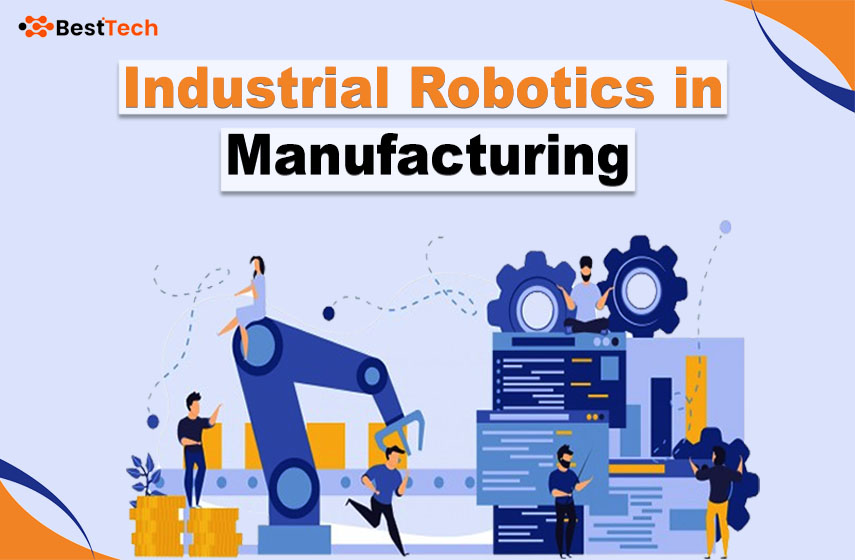Industrial robots are a crucial component of modern manufacturing, altering the process of creating goods. Due to their accuracy, efficiency, and adaptability, these advanced devices have become essential in various industries. This essay examines the significant influence of industrial robotics on the manufacturing industry, illuminating its historical development, many uses, benefits, difficulties, and possibilities.
Robotics in manufacturing represents a significant paradigm shift that will radically change how commodities are produced. These machines have continually pushed the limits of what is possible in the manufacturing industry, from the earliest mechanical arms to today’s most sophisticated robotic systems. Industrial robots’ importance in generating increased productivity, improved product quality, and cost-effective operations increases as automation and artificial intelligence develop.
Historical Perspective on the Development of Industrial Robotics
The first mechanical arms were created in the early 20th century for various uses and thus marks the beginning of industrial robotics. However, it wasn’t until the 1960s that Isaac Asimov used “robotics”. The development of microprocessors and computer technology in the 1970s marked a significant turning point in the field.
Industrial robotics development milestones
Industrial robotics has made incredible strides throughout the years. The development of SCARA and articulated robots, as well as the incorporation of sensors and vision systems for improved perception and decision-making, are all examples of milestones.
Early Manufacturing Applications
Industrial robots initially found use in the production of automobiles, doing activities like welding, painting, and assembling. These early uses showed how robotics may speed up production, lower errors, and increase worker safety.
Industrial Robot Types
Functionality-based classification
Based on their uses, industrial robots can be divided into categories such as material handling robots, welding robots, painting robots, and assembly robots. Each type provides producers with specialized solutions by being built to excel at particular tasks.
Application-based classification
Industrial robots can also be categorized by the areas in which they are used. These include robots that pick and put objects, palletize goods, and collaborate with humans using collaborative robots (cobots). Cobots have grown in popularity due to their adaptability and safety characteristics.
Key characteristics and talents
Industrial robots have many features and skills that enable them to perform well in various production jobs. These qualities consist of:
Several Axis of Motion
Industrial robots frequently have several axes of motion, also known as degrees of freedom. They can move along multiple axes simultaneously, thanks to their flexibility, which gives them exceptional dexterity. A six-axis robot, for instance, may move in six separate directions, allowing it to precisely reach and manipulate items from various angles.
End-of-Arm Tooling (EOAT)
An industrial robot’s end-of-arm tooling is crucial. It is adaptable to the particular task at hand. Grippers, suction cups, welding torches, and specialized equipment for drilling or painting are EOAT examples. Robots are highly adaptable and ideal for various applications inside a production facility thanks to their capacity to alter and modify EOAT.
Precision
Industrial robots are famous for their accuracy and repeatability. They can consistently complete tasks with high accuracy, which lowers errors in industrial procedures. This consistency is essential for sectors like electronics and aircraft, where little deviations can significantly influence product quality.
Efficiency and Speed
Robots are built to operate at incredible speeds, which increases production throughput. They can considerably increase efficiency and cut cycle times by working nonstop for long periods without becoming tired.
Manufacturing Applications
Automotive Industry
One of the industries that adopted industrial robotics first was the automotive industry. Manufacturers frequently employ robotic welding, painting, and car component assembly to increase manufacturing speed and accuracy.
Manufacturing of Electronics
Robots are essential in electronics for operations like chip placement and printed circuit board (PCB) manufacturing. Their accuracy and speed are essential for creating complex electronic devices.
Industry of Food and Beverages
Companies use industrial robots in the food processing and packaging fields to ensure increasing hygiene and precision. They manage activities like sorting, packaging, and quality control.
Manufacturing of Pharmaceuticals
Pharmaceutical businesses use robots to produce drugs, distribute exact amounts of chemicals, and accurately label goods to comply with stringent requirements.
Other industries
Aside from these fields, industrial robots have uses in logistics, agriculture, and aerospace. They can adapt to various industrial requirements thanks to their versatility.
Limitations and Obstacles
The investment’s initial costs and return
Small and medium-sized businesses (SMEs) may need help to invest in industrial robots due to the upfront costs of purchasing and implementing them. A good return on investment (ROI) calculation is necessary to support the expense.
Programming and Integration Issues
Integrating robots into current production processes and programming them to carry out specific jobs can be difficult and time-consuming.
Job Replacement Issues
Concerns about job loss are present as automation grows. However, the shift also allows workers to concentrate on more creative, advanced jobs.
Upkeep and downtime
For optimal performance, robots need routine maintenance. Production schedules might be impacted by downtime for maintenance and repairs.
Upcoming trends
Industrial Robotics’ Emerging Technologies
With advances in artificial intelligence, machine learning, and the Internet of Things (IoT), industrial robotics has a bright future as robots become more innovative and independent.
Human-Robot Cooperation
The idea of human-robot collaboration, in which humans and machines cooperate for the mutual benefit of both, is gaining ground.
Environmental and sustainability considerations
With energy-efficient robots and lower waste output, robotics can contribute to more environmentally friendly manufacturing operations.
Conclusion:
The continuous adoption of industrial robotics is closely tied to the future of manufacturing. These machines have the potential for sustainable, ecologically friendly production methods beyond simple efficiency improvements. Industrial robotics will be at the vanguard of this change as we approach Industry 4.0, which will bring about intelligent factories and networked systems.
A manufacturing environment that is effective and responsive to the changing requirements of society and the environment has never been more possible thanks to the fascinating convergence of human brilliance and machine precision. We may anticipate more innovation, teamwork, and limitless potential in the upcoming chapters of the continuous story of industrial robotics in manufacturing.

